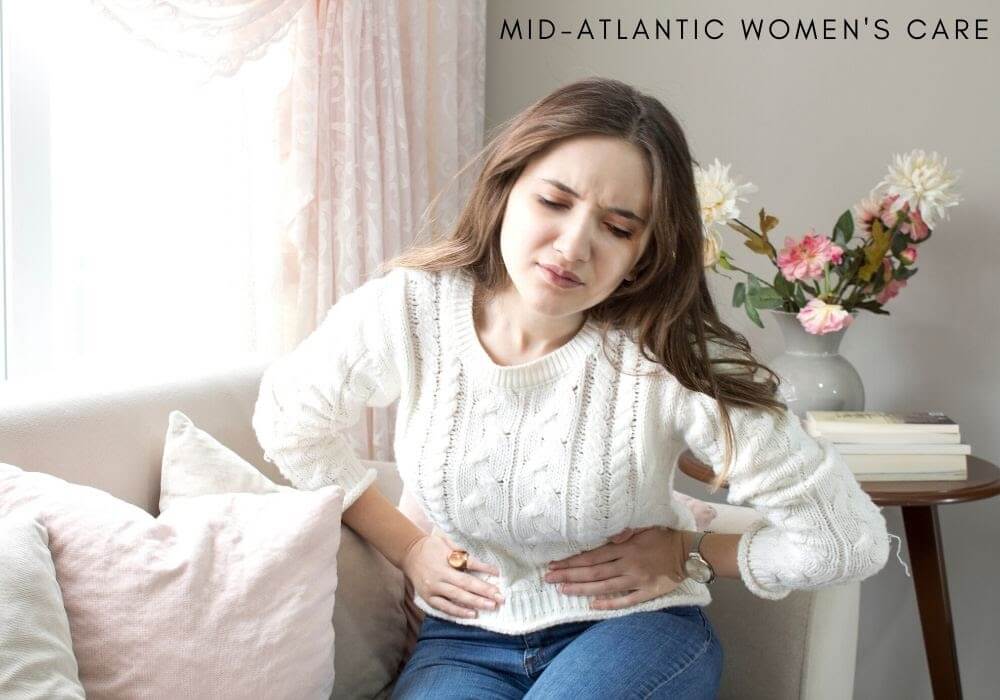Your Questions About Endometriosis Answered

Women are no strangers to the different ways that menstruation can affect life. For many women, this looks like a monthly bout of bloating, cramps, and occasional mood swings. But if you have endometriosis, symptoms can be far more severe and can halt daily life, leaving you miserable and in pain. If you think you may have endometriosis, you are likely filled with questions: What causes it? What are all of the symptoms of this condition? What are my treatment options? Not to worry, we have answers to the most commonly asked questions about endometriosis and treatment options.
What is Endometriosis?
The inner layer of the uterus is lined with a tissue that is called the endometrium. During menstruation, the tissue grows thicker as the tiny blood vessels multiply to prepare for a fertilized egg. If pregnancy does not occur, the tissue breaks down and the blood exits the body through menstruation.
Endometriosis is a condition in which the endometrium travels outside the uterus and surrounds other reproductive organs, most commonly the ovaries and the fallopian tubes, or it attaches itself to other tissues in the pelvis. As the endometrium is displaced from the uterus, the extra blood and tissue have no way to exit the body which, in turn, can cause cysts to form on the ovaries. For many women that are diagnosed with endometriosis, this means severe pain during their menstrual cycle.
Endometriosis occurs in about 1 in 10 women of reproductive age. Most often, it is diagnosed in women who are in their 30s and 40s.
What Causes Endometriosis?
The cause of endometriosis is unknown. However, endometriosis is a condition more likely to develop in women who have other family members who have been diagnosed with endometriosis, women who have undergone a cesarean, and women who have fewer than 25 days between menstrual cycles.
Endometriosis is diagnosed first by a physical exam, including a pelvic exam performed by your OBGYN. However, the only way to truly tell if a woman has endometriosis is through a surgical procedure called laparoscopy. Sometimes a bit of tissue will be removed during this procedure in a process called a biopsy.
What Are The Symptoms of Endometriosis?
Some women with endometriosis do not show symptoms, however, those who do show symptoms experience them right before their period. The most common symptom of endometriosis is chronic (long-term) pain in the pelvic region. Endometriosis can also cause pain during sexual intercourse. Endometriosis can also affect the bowel and bladder causing pain during bowel movements or urination, respectively. Heavy menstrual bleeding is another common symptom of endometriosis. Symptoms can be severe enough that they disrupt daily life and can include
- Heavy periods
- Severe lower back pain
- Intense cramps
- Intense stabbing pains
- Severe migraines
- Bloating
- Nausea
- Diarrhea or constipation
- Pain during urination and/or bowel movements
- Pain during sexual intercourse
Endometriosis can also make it difficult to get pregnant. Almost 40% of women with infertility have endometriosis. The inflammation caused by endometriosis can damage the sperm or egg or interfere with their movement through the fallopian tubes and uterus. In more severe cases of endometriosis, the fallopian tubes may be blocked by adhesions or scar tissue.
What Are the Treatment Options for Endometriosis?
Treatment for endometriosis will depend on the severity of the condition, the symptoms the patient experiences, and whether or not the patient plans to get pregnant. Endometriosis may be treated with medication, surgery, or both.
If you or someone you love are suffering from endometriosis, you don’t have to go it alone. The staff at Mid-Atlantic Women’s Care is knowledgeable when it comes to this common condition and we understand what you’re going through. Contact us to schedule an appointment and find the best course of action for you.